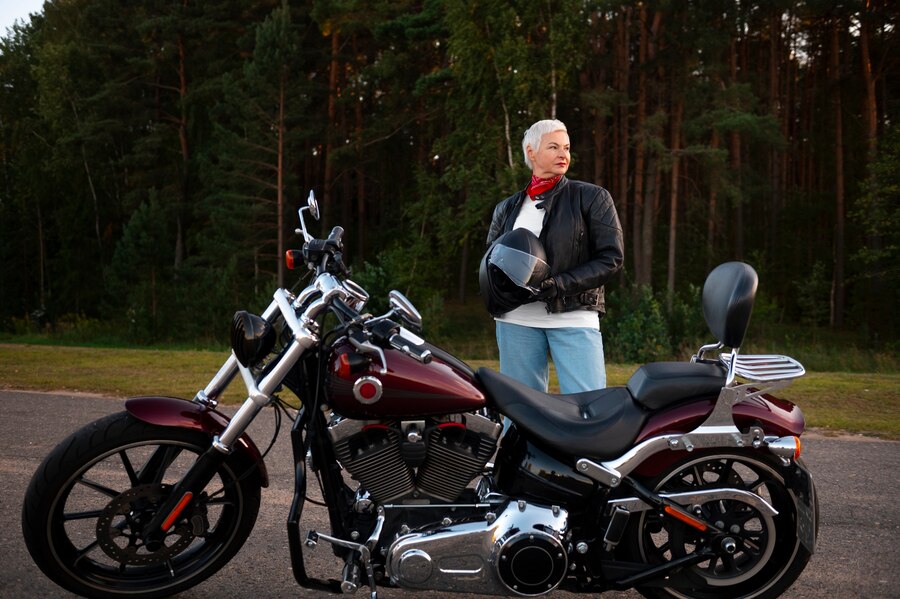Choosing the right size auto bike is crucial for ensuring comfort, control, and safety while riding. An improperly sized bike can lead to discomfort, strain, and even accidents. Whether you’re a seasoned rider or a beginner, understanding how to match your bike to your height is essential. This guide will walk you through everything you need to know about selecting the right size auto bike for your height, from understanding bike dimensions to making the right adjustments.
Table of Contents
ToggleWhy Size Matters
The size of your bike directly impacts your riding experience. A bike that’s too small can cause cramped seating, discomfort in your back and shoulders, and difficulty in controlling the bike. On the other hand, a bike that’s too large can be unwieldy, making it hard to reach the ground with your feet or control the handlebars effectively. Both scenarios increase the risk of accidents and can make riding an unpleasant experience.
Understanding Bike Dimensions

Before diving into how to choose the right size bike, it’s important to understand the key dimensions that influence bike sizing:
- Seat Height: The distance from the ground to the top of the seat. This is a critical measurement because it determines how easily you can place your feet on the ground while seated.
- Handlebar Height: The height of the handlebars relative to the seat. Proper handlebar height is essential for comfort and control, particularly on long rides.
- Wheelbase: The distance between the front and rear wheels. A longer wheelbase provides more stability at high speeds, while a shorter wheelbase allows for quicker, more responsive handling.
- Frame Size: The overall size of the bike’s frame, often determined by the length of the seat tube (the tube that connects the seat to the pedals). Frame size affects both the reach to the handlebars and the distance from the seat to the ground.
Measuring Your Height and Inseam
To choose the right bike size, you’ll need two key measurements: your overall height and your inseam length.
- Height: Stand barefoot against a wall with your heels touching the wall. Use a flat object like a book to mark the top of your head on the wall, and measure the distance from the floor to the mark.
- Inseam: This is the distance from the ground to your crotch. To measure your inseam, stand barefoot with your feet slightly apart, and measure from the ground to the top of your inner thigh.
These measurements will help you determine the correct seat height and frame size for your bike.
Choosing the Right Seat Height

The ideal seat height allows you to place the balls of your feet on the ground when seated on the bike. To adjust your seat height, follow these steps:
- Mount the Bike: Sit on the bike and ensure that the bike is upright.
- Check Foot Placement: Your feet should touch the ground with the balls of your feet while you’re seated. If your feet are flat on the ground, the seat is too low; if you can barely reach the ground, it’s too high.
- Fine-Tune: Adjust the seat height until you can comfortably touch the ground with the balls of your feet.
Proper seat height is important not just for comfort but also for safety. Being able to quickly and easily place your feet on the ground when stopping can prevent falls and accidents.
Finding the Right Frame Size
The frame size is usually measured in inches or centimeters and is often categorized by small, medium, large, or extra-large. The right frame size for you depends on both your height and inseam length.
- Frame Size Chart: Most manufacturers provide a size chart that correlates your height and inseam length with the recommended frame size. For example, someone who is 5’8″ with a 32-inch inseam might be best suited to a medium frame size.
- Stand-Over Height: Stand over the bike frame with both feet flat on the ground. There should be at least an inch of clearance between the top tube of the frame and your crotch. If there’s no clearance, the frame is too large; if there’s too much clearance, it’s too small.
- Test Ride: If possible, test ride the bike before making a purchase. Pay attention to how the bike feels—if you’re reaching too far to the handlebars or feel cramped, the frame size might not be right for you.
Handlebar Height and Reach

Handlebar height and reach are crucial for maintaining good posture and comfort while riding. Incorrect handlebar positioning can lead to back, neck, and shoulder pain.
- Adjusting Handlebar Height: The handlebars should be level with or slightly above the seat height. If the handlebars are too low, you’ll be leaning too far forward, which can cause strain. If they’re too high, it can make steering difficult.
- Reach: The distance from the seat to the handlebars should allow you to maintain a slight bend in your elbows when holding the handlebars. If your arms are fully extended or too bent, adjust the handlebars or consider a different frame size.
Consider Your Riding Style
Your riding style also influences the right bike size and adjustments:
- Sport Riding: If you’re into sport riding, you might prefer a bike with a more aggressive stance, where the handlebars are lower than the seat. This allows for better aerodynamics and control at high speeds.
- Commuting: For city commuting, a more upright position is often preferable. This means the handlebars should be higher and closer to the seat, allowing for a comfortable, relaxed posture.
- Long-Distance Touring: Comfort is key for long rides, so a balanced position with handlebars level with the seat is often best. This reduces strain on your back and shoulders over extended periods.
Adjusting Suspension
Many modern bikes come with adjustable suspension, which can be tuned based on your weight and riding style. Proper suspension settings contribute to both comfort and handling.
- Preload Adjustment: This setting controls how much the suspension compresses under your weight. If the bike feels too soft or bottoms out easily, increase the preload. If it’s too stiff, decrease it.
- Damping Adjustment: Damping controls how quickly the suspension returns to its original position after compressing. Proper damping ensures that the bike remains stable over bumps without feeling too harsh.
- Test and Adjust: Ride the bike over various surfaces and adjust the suspension until you find a setting that feels stable and comfortable.
Special Considerations for Different Body Types

People with different body proportions might need to make additional adjustments or consider custom options:
- Long Legs, Short Torso: If you have long legs and a short torso, you might need a smaller frame with a longer seat post. This allows you to get the right seat height without stretching too far to reach the handlebars.
- Short Legs, Long Torso: If you have short legs and a long torso, consider a bike with a shorter seat tube and a longer top tube. This ensures you can reach the ground while also having a comfortable reach to the handlebars.
- Heavy Riders: Heavier riders might need to adjust the suspension more significantly or consider a bike with a stiffer frame. Proper tire pressure is also crucial for maintaining control and avoiding flats.
The Importance of a Professional Fitting
While it’s possible to make many adjustments on your own, getting a professional bike fitting can be invaluable, especially if you plan to ride frequently or for long distances. A professional fitter can:
- Analyze Your Riding Position: A professional will observe your posture and make adjustments to the seat height, handlebar position, and other components to optimize comfort and performance.
- Adjust for Flexibility and Strength: They can also take into account your flexibility and strength, making adjustments to reduce strain on your muscles and joints.
- Fine-Tune Components: Professionals can fine-tune your bike’s components, such as the crank length, pedal position, and saddle angle, to ensure everything is perfectly suited to your body.
Final Tips for Choosing the Right Size Bike
- Test Multiple Bikes: If possible, test ride several bikes before making a decision. Different brands and models can feel very different, even if they have similar dimensions.
- Don’t Ignore Comfort: Comfort should always be a priority. A bike that fits well will feel natural to ride, and you won’t have to constantly think about your position or make frequent adjustments.
- Consider Future Needs: If you plan to use the bike for different types of riding in the future, consider a size that allows for flexibility in adjustments. For example, a bike with an adjustable seat post or handlebar stem can accommodate different riding styles.
- Invest in Quality Gear: Proper gear, such as a good helmet, gloves, and riding shoes, can also enhance your comfort and safety on the bike.
Conclusion
Choosing the right size auto bike is a process that requires careful consideration of your height, inseam, riding style, and comfort preferences. By understanding the key dimensions of a bike and how they relate to your body, you can make an informed decision that will enhance your riding experience. Whether you’re commuting in the city, enjoying a leisurely weekend ride, or embarking on a long-distance tour, the right-sized bike will make all the difference in your comfort, control, and enjoyment on the road .

